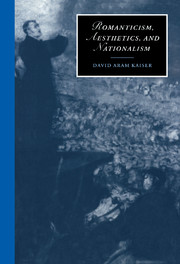Crossref Citations
This Book has been
cited by the following publications. This list is generated based on data provided by Crossref.
2010.
The Tyranny of Opinion.
p.
100.
2010.
The Tyranny of Opinion.
p.
63.
2010.
The Tyranny of Opinion.
p.
27.
2010.
The Tyranny of Opinion.
p.
263.
2010.
The Tyranny of Opinion.
p.
129.
2010.
The Tyranny of Opinion.
p.
1.
2010.
The Tyranny of Opinion.
p.
159.
2010.
The Tyranny of Opinion.
p.
188.
2010.
The Tyranny of Opinion.
p.
220.
2010.
The Tyranny of Opinion.
p.
254.
Frey, Anne
2012.
Romantic Nationalism and the British State.
European Romantic Review,
Vol. 23,
Issue. 3,
p.
271.
Dick, Alexander
2013.
Romanticism and the Gold Standard.
p.
74.
Hagen, Joshua
2015.
Shaping Public Opinion through Architecture and Urban Design: Perspectives on Ludwig I and His Building Program for a “New Munich”.
Central European History,
Vol. 48,
Issue. 1,
p.
4.
2015.
Radical Orientalism.
p.
263.
2017.
Women Wanderers and the Writing of Mobility, 1784–1814.
p.
289.
2017.
Urbanization and English Romantic Poetry.
2020.
Print and Performance in the 1820s.
p.
265.
2021.
Art, Science, and the Body in Early Romanticism.
p.
254.
2021.
William Wordsworth, Second-Generation Romantic.
p.
273.
Lee, Haram
2021.
Nationalism and Irony: William Wordsworth’s Political Sonnets of 1807.
English Studies,
Vol. 102,
Issue. 8,
p.
1046.





